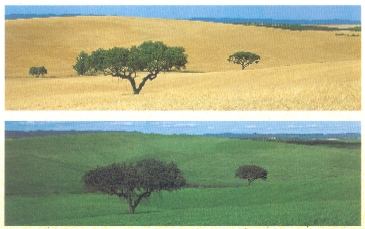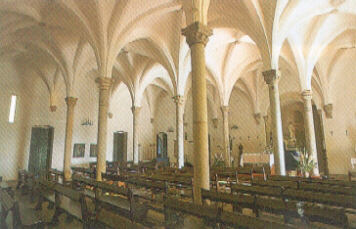Portugal has 8 touristical regions:
Each one has a character of its own and fulfils one week journey quite well. The choice will depend on what kind of holidays you are looking for, and the purpose of this text is to aid in finding a preference. In case you really want to know the country and the people (which would be my choice, that is why I mention this), you should plan for at least 2 weeks and rent or bring an automobile to explore the continental parts.The Madeira archipelago
The Azores archipelago
The Algarve
Lisbon and surroundings (incl. Ribatejo)
The Northern Coastline
The Center Coastline
The Interior North & Center
The Alentejo
Madeira and Algarve are for the most dedicated to international tourism, so it gets a bit more expensive there. Both are very beautiful (though Algarve has deranged areas due to bad urbanism) and have excellent facilities suitable for anyone looking for some extra comfort, no matter how much it costs. In Madeira you can explore its varied landscapes in the main island, but if you look for a beach you must jump to the smaller island called Porto Santo. It is a little funny that it works out as if the archipelago's attractions had to be split between the two islands. Anyway, if you are not in for beaches, stick to the Madeira island and you will be very very happy, I am sure.
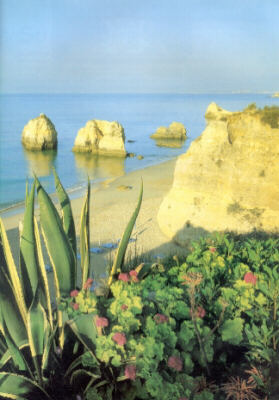 Algarve is a very special province, because it has always been like a separate country, since its conquest from the Moors in the 13th century. In the sixties it started to transform into a seaside resort, especially to the west of Faro, the main city. The famous navigation school that was the original (some say mythical) site of all scientific enterprise that allowed the discoveries in the 15th century was near Lagos and Sagres. Silves was a very important Moor city and it still holds a lot of that atmosphere.
Algarve is a very special province, because it has always been like a separate country, since its conquest from the Moors in the 13th century. In the sixties it started to transform into a seaside resort, especially to the west of Faro, the main city. The famous navigation school that was the original (some say mythical) site of all scientific enterprise that allowed the discoveries in the 15th century was near Lagos and Sagres. Silves was a very important Moor city and it still holds a lot of that atmosphere.
As for beaches, you have two options: to the East of Faro you will find endless stretches of sand with noone around, just a few fishermen, check in the map around a town called Tavira or refer to the Ria Formosa Wild Park; to the West, from Faro to Lagos you have nothing but seaside resorts with all sorts of daylight and nightlife offerings, very much in the Costa del Sol (Andalucia) style. I reckon the mainstand will be the city of Portimão, but if you look for first class international tourism I suppose Vilamoura is hard to beat anywhere in the world. Some will say that the fish is excellent in Algarve -- I won't deny that, but you have the rest of the coastline to taste the same or better.
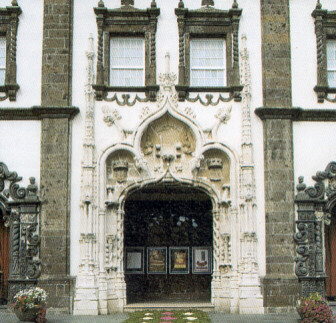
Azores is famous for its beauty, a wild beauty to be sure. Unfortunately I have not been there ever, hence no details, sorry. Angra do Heroísmo is Heritage of the Mankind (UNESCO).
 |
Lisbon is where I come from but I can safely say that every tourist loves to be there for a while.
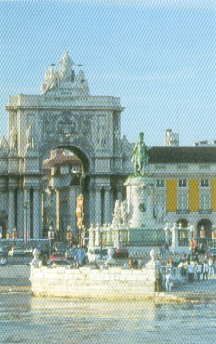 |
 |

 In its surroundings there are at least three spots that can't be missed: Cascais, westwards by the coast, the end of the line of a fine stretch, starting at the exit from Lisbon, a kind of Mediterranean driving by the sea, with the plus that it's not the Mediterranean, but the Ocean;
In its surroundings there are at least three spots that can't be missed: Cascais, westwards by the coast, the end of the line of a fine stretch, starting at the exit from Lisbon, a kind of Mediterranean driving by the sea, with the plus that it's not the Mediterranean, but the Ocean;
Sintra, standing on the slopes of a hill where you will find beautiful gardens, the remains of a Moor castle, the beautiful Pena Palace, dense vegetation either of ferns, palm trees or Atlantic forest, thanks to its microclimate... oh!, and nice places for eating;

| and the Setúbal coast, with a unique vegetation in the Arrábida mountain on the back of Sesimbra, Sesimbra itself, and the castle of Palmela -- REAL fish is in Setúbal and Sesimbra, by the way. | 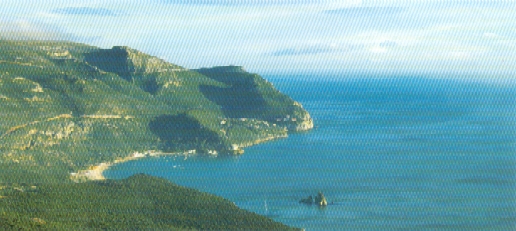 |

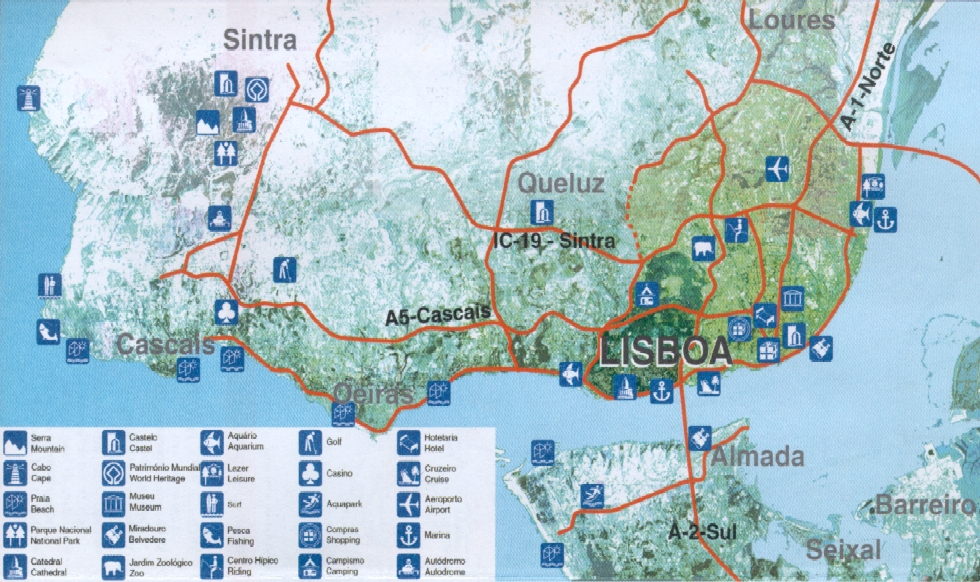 |
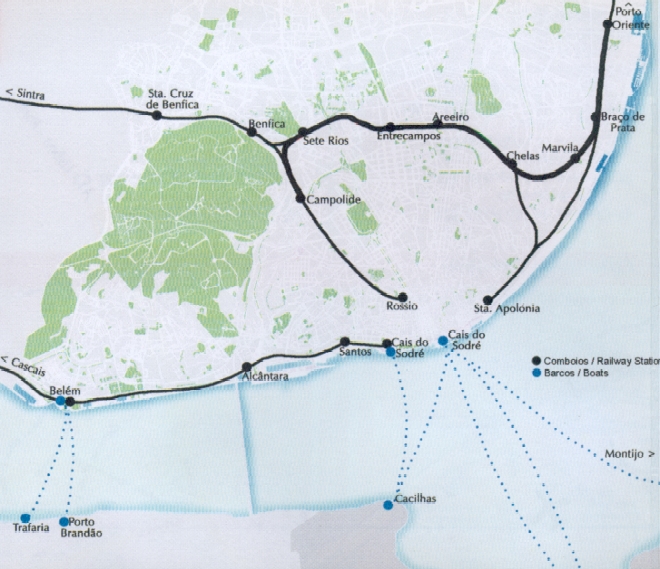 |
The Ribatejo province lies upstream along the river Tejo that ends after Lisbon; though it is placed in the Interior South touristic region it should be regarded, by many respects, as belonging with the Lisbon surroundings. It is a prosperous rural region with very famous wine and food (no fish, though) and is the true heart of the Portuguese bull-fighting tradition. Santarém and Tomar are cities that deserve a visit, but for meals try Almeirim, as an insider's hint.
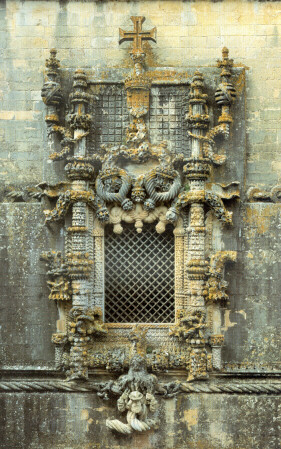
The North Coastline is centered around Porto and Braga. Believe me, it is like going to another country! Porto is essentially a trade city, and with the remainder of the region bears a big share of all business from the country. Those people work hard and are very independent. The landscape is dominated by granite, which gives a very peculiar appearance. Porto (or Oporto for the British) has a definite mark of the English (Port wine-related) presence for over 2 centuries. But if you look for the vineyards, they are located upstream by the river Douro that joins the ocean by Porto (check below). Both Porto and Lisbon would take too long to describe at this point, but it will be a pleasure to tell more for particular aspects by e-mail. You can also follow a link to a text of mine on meeting with people and cultural tips while in Porto or Lisbon.
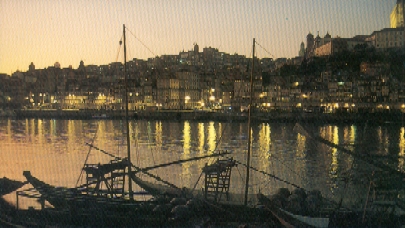
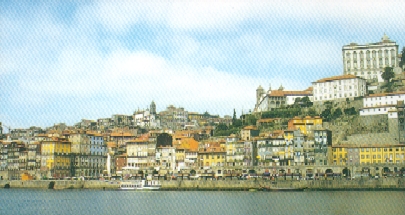
Some good excursions from Porto:
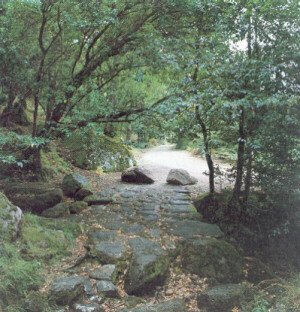 Follow the coastline towards
Viana do Castelo, a very beautiful city where you can have an excellent taste of the
Minho province, my favourite not only for the beauty and the food and the
wine but also (and mostly) for the peculiar nature of the people. Minho is a blessed
land.
Follow the coastline towards
Viana do Castelo, a very beautiful city where you can have an excellent taste of the
Minho province, my favourite not only for the beauty and the food and the
wine but also (and mostly) for the peculiar nature of the people. Minho is a blessed
land.
The Interior is yet something else. Here one does not find as much fish but the landscapes in particular, the character of some cities and also the (meat-based) gastronomy are very rewarding. Communications are not easy with some places, making the Interior a part of Portugal that, without the autonomy of a car, cannot be explored as one would wish to.
To the North, framed by the cities of Vila Real, Chaves and Bragança, is Trás-os-Montes, a very hilly and austere province, with its granites, steep slopes and tough people. The gastronomy is varied and very peculiar. Wealth is not the common mark there, and in some remote villages people are still living their Middle-Ages way of life that gives no room for smiling except perhaps during special religious festivities. From what I know, most of the islands of the Azores have inherited the culture from here. And indeed like Azores, it is a region for special tastes. I like going there myself, for those people are friendly, the landscapes monumental and the food thrilling. But I admit that not everybody will agree. The Beira in the Centre is of about the same character but not as austere. Charming towns like Viseu and especially Guarda, the wonderful mountain Serra da Estrela which on its foot has a beautiful town called Covilhã, as well as places like Trancoso, Castro d'Aire, Sertã, Piódão, etc.. Between the two provinces lies the Douro valley, mentioned before for the Port Wine vineyards, which is worth travelling along either by boat, train or car. Lamego is a nice town, but to the east, for example on the Tua valley, you have some of the most fantastic landscapes you will imagine. Try also Torre de Moncorvo, Mogadouro and Miranda do Douro, all upstream from Lamego/Régua. The Coa valley has become famous recently for the prehistoric carvings found there.
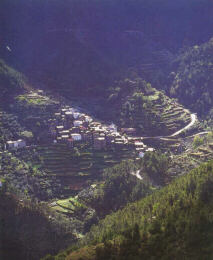
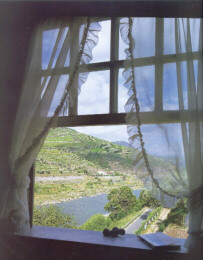
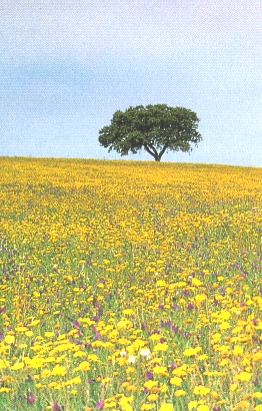 |
To the South you have 1/3 of our continental area occupied by one province
called Alentejo, where by the way our university
is located in the city of Évora. Only 1/20 of the population is in Alentejo,
and in the countryside it is a region of great economic contrasts. Évora,
however, displays quite a lot of historical as well as present (nothing to be
compared with Braga, of course) prosperity. The landscape is relatively flat, most
of it being used for agriculture, when it is not the olive trees and oaks that are
very characteristic, and cattle as well; you might ask yourself "where are the
people gone?" in case you have been earlier in the North Coast. Three parts can be distinguished in the Alentejo: the North, where the main town is Portalegre at the foot of a beautiful mountain (Serra de São Mamede) with two very famous historical villages, Castelo de Vide and Marvão. |
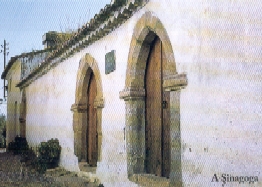 |
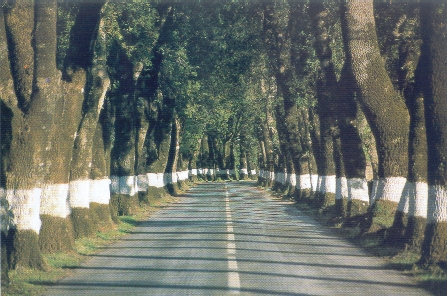 |
The centre, with Évora as the main point of interest (the historical centre is a miracle of preservation since the 16th century), is a famous wine-producing region; in my opinion, Évora being recognised as one of the most important gastronomy spots in Portugal is quite deserved, but the regional food here can be tasted in the villages, in appropriate restaurants, with less sophistication, lower prices, but all the taste.
Finally, the South ("Baixo") Alentejo is a more arid region, isolating the Algarve from the rest of the country by the way, but its coastline (to the South of Setúbal till Algarve) is awesome and a recent discovery for the Portuguese seeking unspoilt natural places to relax (I wonder how long it will stay like that...). Cities and villages like Serpa, Mértola, Alvito, Alcácer do Sal, and of course Beja were very important in the Moorish times and can be very interesting for the visitor.